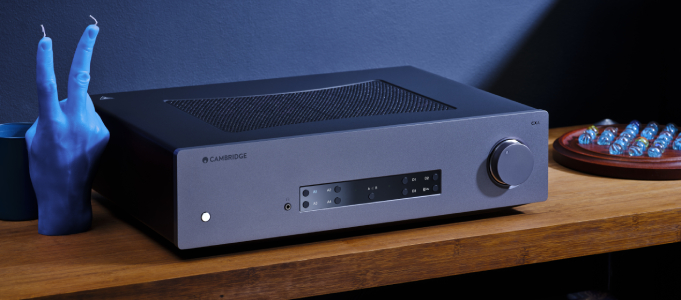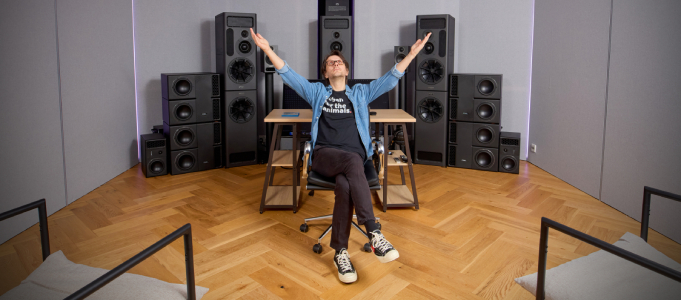What the Press Aren’t Saying about today’s TVs

Back in 2001 all it took was a lazy leap of the collective imagination to picture a sleek flatpanel screen on the average suburban living room wall, to ensure plasma’s success.
Plasma was that novel and that appealing, despite the asking price of about $15,000.
And despite the best efforts of the TV manufacturers to convince us otherwise, not much of import, in comparison, has happened since in TV land.
A flatscreen was the logo that consigned the venerable tube TV to a technological graveyard in what now appears like a heartbeat.
In this sense, despite quantum leaps in resolution and variations of flatscreen technology, TVs have stood conceptually still, since 2001.

In much the same way that smartphones that get smarter by the minute are still, smartphones, flatscreen TVs conform to the same generic type first displayed in Australia back in 2001.
There’s no denying the differences between LCD, LED and OLED for example, but there’s also no disguising the lack of genuine TV innovation such as for example, a TV of the future that projects images without a display panel.
To get a handle on how and why TV manufacturers continue dressing up TV mutton to pass as TV lamb, we need to reimagine the impact the first flatscreen telly has on the consumer imagination.
Compared to the conventional crate-like tube TV, the new flatscreen route to TV viewing bliss was really a case of a no-contest between traditional and truly novel TV technologies.
Looking back at plasma’s arrival in Australia, the very first of its marque courtesy of an arrangement organised between Melbourne’s Herald Sun and Fujitsu went on display.
The venue was the Melbourne Exhibition Centre known as “Jeff’s Shed’’ and the occasion? The Herald Sun Sound and Vision show which was part of the very much larger annual Home Ideas Show.
In those heady days of genuine technological innovations – think plasma, LCD, DVD, mobiles, desk-top PCs, the Internet – I was well placed and fortunate be the Herald Sun’s foundation audio-video editor.
The ‘’Hun’s’’ audience has always been ‘’mass-market’’. A populist orientation that provided an education as well as an instinct about technologies likely or not likely, to be snapped up by the mass market.
The very first plasma to go on display in Australia at that HIA show was a Fujitsu 42-inch model with the paltry resolution of 852x480 pixels and a price tag of about $18,000.
Picture quality was hardly the equal of the better tube TVs of the day. But as I watched the mouth-open delight of the tens of thousands of visitors drawn to the Fujitsu stand at that HIA show, I knew the tube TV’s days were numbered.
The idea of a large TV hanging on a living room wall had amazing traction, despite the lousy picture quality and the unaffordable price tag.
Even so, I wrote an article suggesting plasma would steal the tube TV’s perch within five to seven years of its launch. As prices tumbled, that timeline proved to be correct.
Despite LCD’s ascendancy since then, no TV technology has gone even close to rivalling the impact of the 2001 flatscreen revolution.
Leaving aside that today’s batch of TVs are thinner, have superior levels of resolution, are smarter, consume less power than previous models, conceptually they’re simply variations of previous generations of endless flatscreen makes and models.
Which explains why consumers are not exactly doing a Usain Bolt to their nearest TV stockist for a new telly, at the same rate they turned out to welcome the first affordable flatscreen models.
This staleness is creating endless problems for TV manufacturers struggling to make a dollar on a product category that is now a hotly contested generic, mass-market commodity.
But with no genuinely revolutionary TV technology on the horizon, just yet, it also explains why the major brands continue to tinker around the edges of flatscreen technology trying to invent the TV equivalent of the wheel.
Indisputably, the next giant leap forward for display technology will arrive sans screen. It could come courtesy of say, Holographic TV technology. What I’m willing to suggest is two things: the boom days of flatscreen TV sales are well and truly behind us and ahead of us is the lure of the screen less TV.
We welcome your thoughts in the comments section below.
Peter Familari
One of the veterans of the HiFi industry, Peter was formerly the Audio-Video Editor of the Herald Sun national newspaper in Australia for over two decades. One of the most-respected audio journalists in the industry, Peter brings his unparalleled experience and a unique story-telling ability to StereoNET.
Posted in:Visual Technology
Tags: tv
JOIN IN THE DISCUSSION
Want to share your opinion or get advice from other enthusiasts? Then head into the Message Forums where thousands of other enthusiasts are communicating on a daily basis.
CLICK HERE FOR FREE MEMBERSHIP







